
History
Persia is the ancient name of Iran,
which of course implies this breed's origins and age. The Persian people
considered them very valuable and treated them like true treasures.
Personality
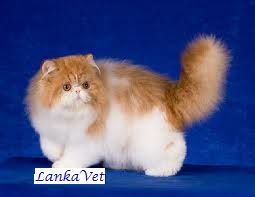 The Persian is a long-haired
breed of cat characterized by its round face and shortened muzzle. They are
sweet and gentle, but need to feel secure in their environment. They are well
known for their quiet, docile dispositions and for very playful and
affectionate nature. Though, they are not very demanding, they love to be
petted. They will sit on your lap, follow you around the house and sleep in
your bed during cold nights. They are very adaptable and accommodating.
The Persian is a long-haired
breed of cat characterized by its round face and shortened muzzle. They are
sweet and gentle, but need to feel secure in their environment. They are well
known for their quiet, docile dispositions and for very playful and
affectionate nature. Though, they are not very demanding, they love to be
petted. They will sit on your lap, follow you around the house and sleep in
your bed during cold nights. They are very adaptable and accommodating.
Breed
Characters
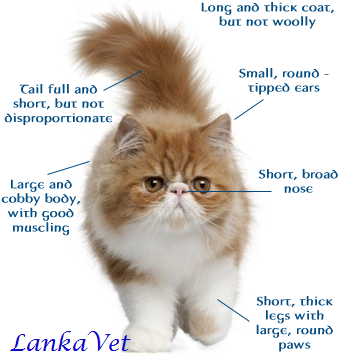 As you already aware, that the Persians
are well known for their long, luxurious fur and their distinct, sweet
expressions. Persians have a flat face and round eyes. Their heads are round
and large, and the ears small and round-tipped. The body of the Persian is
thick and stocky.
As you already aware, that the Persians
are well known for their long, luxurious fur and their distinct, sweet
expressions. Persians have a flat face and round eyes. Their heads are round
and large, and the ears small and round-tipped. The body of the Persian is
thick and stocky.
Persians come in a large
variety of colors and patterns, including solid, silver, golden, shaded, smoke,
tabby, parti-color, bi-color and Himalayan
Persians come in many patterns and colors
listed below.
Solid
|
Himalayan
|
Patched
|
Silver
|
Black
|
Seal Point
|
Black and White
|
Chinchilla
|
White
|
Blue Point
|
Red and White
|
Shaded Silver
|
Blue
|
Tortie Point
|
Tortie and White
|
|
Cream
|
Red Point
|
Blue and White
|
|
Red
|
Cream Point
|
Calico (Blue
Cream White)
|
|
Tortoiseshell
|
Blue/Cream Point
|
Patched
|
|
Blue/Cream
|
Chocolate Point
|
||
Chocolate
|
Lilac Point
|
||
Lilac
|
Kitten
Care
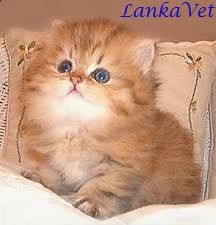 When you first bring your kitten home you should put him in
a small area until he is comfortable with his new surroundings. This can be
your bedroom, bathroom or any other comfortable place and let him find its own
way out of the basket. That allows him to explore the new environment for a few
days. Make sure that all doors and windows are shut, to prevent the kitten from
escaping. Kittens are very often frightened by children or other pets that are
new to them. Children should therefore be recommended to be quiet and wait for
the kitten to adapt the new environment, while other animals should be
introduced later, gradually and one at a time. Remember that adult cats might
attack to the baby cat, since they confront it as a competitor or enemy.
When you first bring your kitten home you should put him in
a small area until he is comfortable with his new surroundings. This can be
your bedroom, bathroom or any other comfortable place and let him find its own
way out of the basket. That allows him to explore the new environment for a few
days. Make sure that all doors and windows are shut, to prevent the kitten from
escaping. Kittens are very often frightened by children or other pets that are
new to them. Children should therefore be recommended to be quiet and wait for
the kitten to adapt the new environment, while other animals should be
introduced later, gradually and one at a time. Remember that adult cats might
attack to the baby cat, since they confront it as a competitor or enemy.
Talk to your kitten and encourage it to play with a toy but
do not overwhelm it with extreme attention. Kittens need warmth, since they
miss their mother and litter mates. During the first month of their life,
kittens should be breastfeeding. They should separate their mother only after
one month old. At this age they can start eating kitten food which comes in
small kibbles that encourage kittens to crunch and help them develop stronger
gum and teeth.
A litter tray must be available at all times and kept in
the same place. Solid matter and wet lumps should be removed from the tray
frequently and the litter renewed when necessary.
Weight: Male: 08 – 10 pounds
Female: 07 – 09 pounds
Height: Male: 10 - 15 inches
Female: 10 - 14 inches
Lifespan
Persians cats usually live 15 years
or more.
Nutrition
As usual, the diet of Persians
must contain proteins, fats, carbohydrates, mineral substances and vitamins.
Changing your Persian's diet abruptly or overfeeding will cause abdominal discomfort
or diarrhea. Any changes in the diet
should gradually be done. Begin by mixing approximately one part new food to
about five parts current food. Slowly increase the ratio of new food over the
next several days until you eventually are feeding nothing but the new food.
A balanced and rich in
vitamins, protein and fiber nutrition will prevent most health problems such as
obesity and moreover help them develop a rich and shiny fur.
Suggested daily intake of dry food
for Kittens
Age in Months
|
Body Weight
|
Suggested Daily Intake
|
01
|
0.8-1.7
|
25-40
|
02
|
1.8-3.0
|
40-50
|
03
|
3.1-4.0
|
50-55
|
04
|
4.1-5.0
|
55-60
|
05
|
5.1-6.0
|
60-70
|
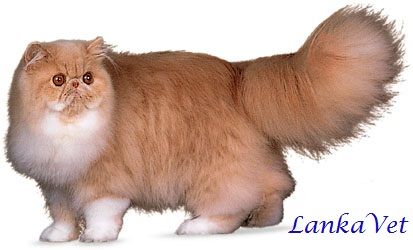
Suggested daily intake of dry food
for Cats
Body weight
|
Suggested Daily Intake
|
||
Lean Type
|
Normal
|
Overweight
|
|
6 lb
|
50
|
35
|
25
|
8 lb
|
70
|
50
|
35
|
10 lb
|
80
|
70
|
50
|
42 lb
|
100
|
80
|
50
|
14 lb
|
100
|
80
|
70
|
16 lb
|
130
|
100
|
80
|
18 lb
|
140
|
100
|
80
|
Grooming
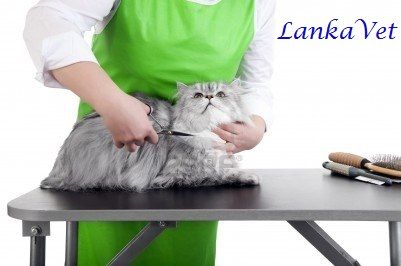 Coat: Persian
cats have a rich and long-haired coat; so that, they have a high risk of
developing hairballs. Therefore; Persians require frequent grooming with the
help of a metallic brush. The brushing movements need to be repetitive, however
delicate as the Persian cats' skin is highly irritable. To get rid of tight
knots, use a brush with wide-teeth first and dissolve them gradually. If you
neglect this daily routine, your Persian cat will develop tight knots and
become aggressive during the next grooming.
Coat: Persian
cats have a rich and long-haired coat; so that, they have a high risk of
developing hairballs. Therefore; Persians require frequent grooming with the
help of a metallic brush. The brushing movements need to be repetitive, however
delicate as the Persian cats' skin is highly irritable. To get rid of tight
knots, use a brush with wide-teeth first and dissolve them gradually. If you
neglect this daily routine, your Persian cat will develop tight knots and
become aggressive during the next grooming.
Persians moult heavily twice a
year, and shed some hair all year round. Regular grooming will improve the
blood circulation and help avoid many unpleasant and long-lasting infections
and allergies. You have to spend at least 20
minutes a week grooming your Persian.
It is believed that the average total length of the hair on a Persian cat is over 230 miles.
Ears: Clean
their ears once a week to prevent infections. Consult your vet on choosing the
proper cat ear cleaning solution and use it to remove the excess of wax, debris
and dead tissues.
Grooming Equipments
Teeth: Their
teeth should be checked periodically and brushed with a special wipe to prevent
teeth and gum diseases. There are a lot of cat toys, specially designed to
remove food wastes and prevent teeth irritation.
Eyes: Outside
of simply wiping their eyes, check for signs of dryness as well. Use an eye
cleaning solution to wash out the eyes. Be sure you do not use contact cleaner.
Place a light amount of lubricating eye gel into the eyes after cleaning to
keep them moist.

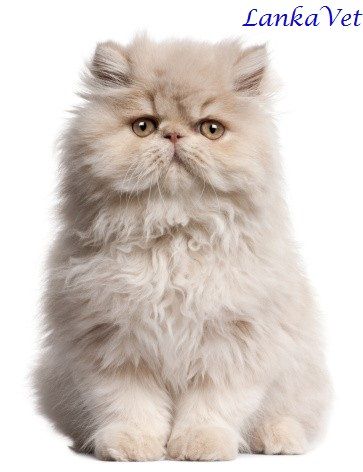
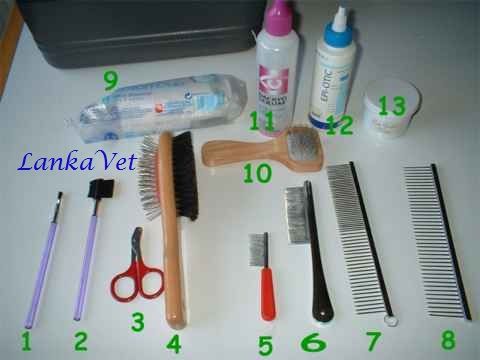
No comments:
Post a Comment